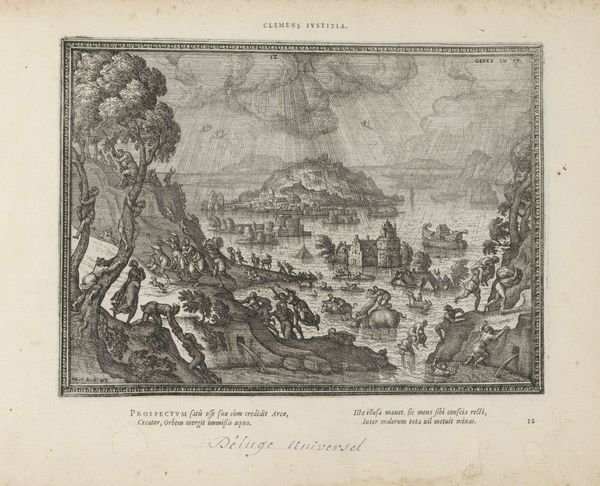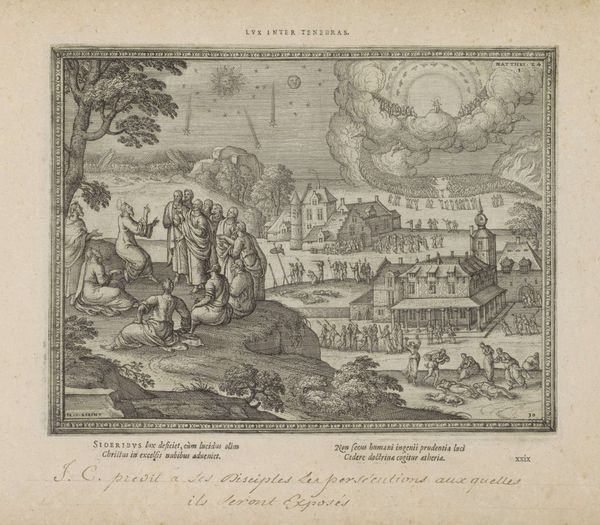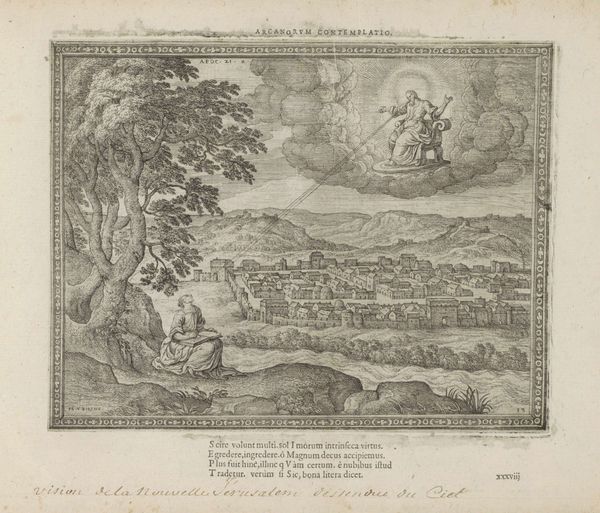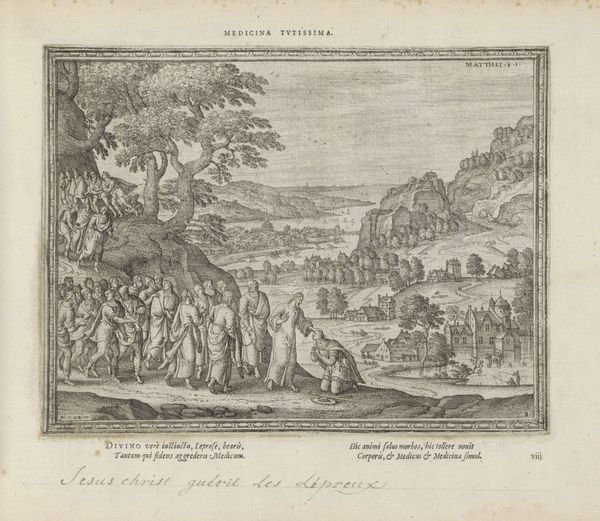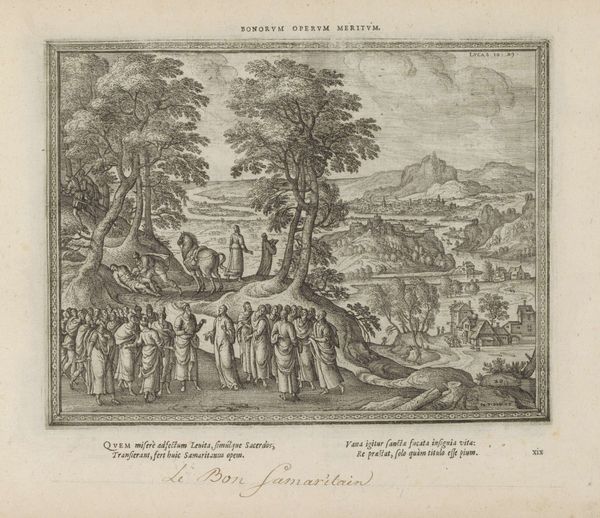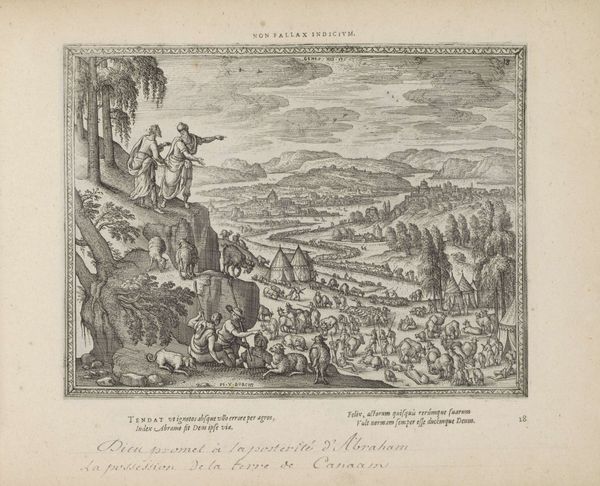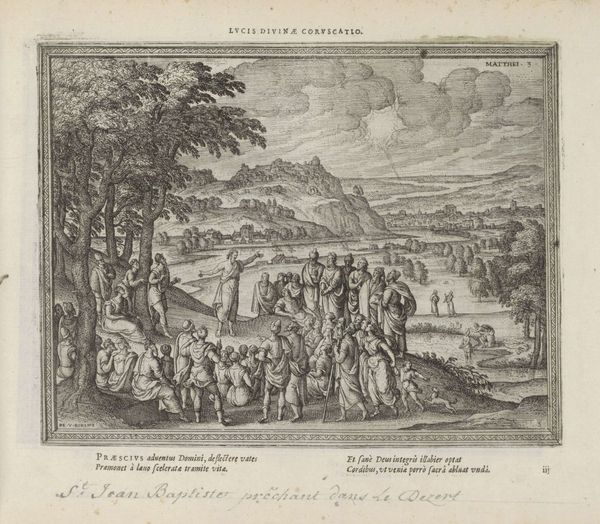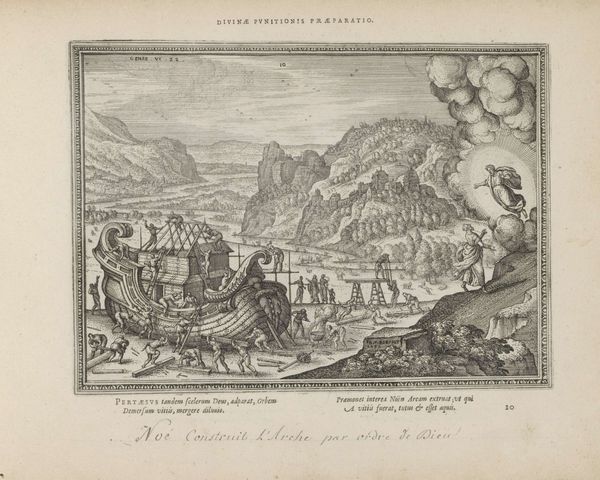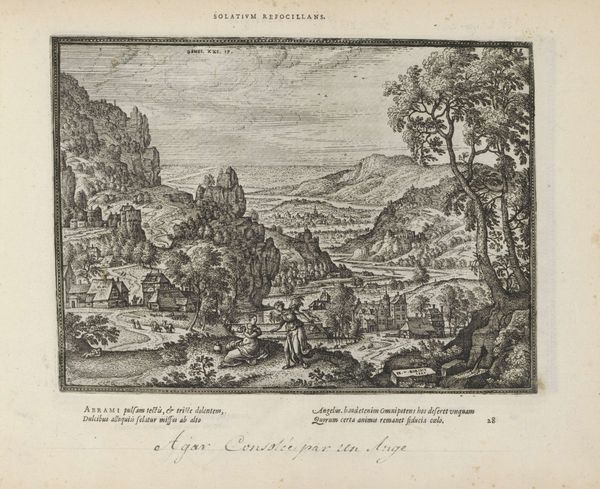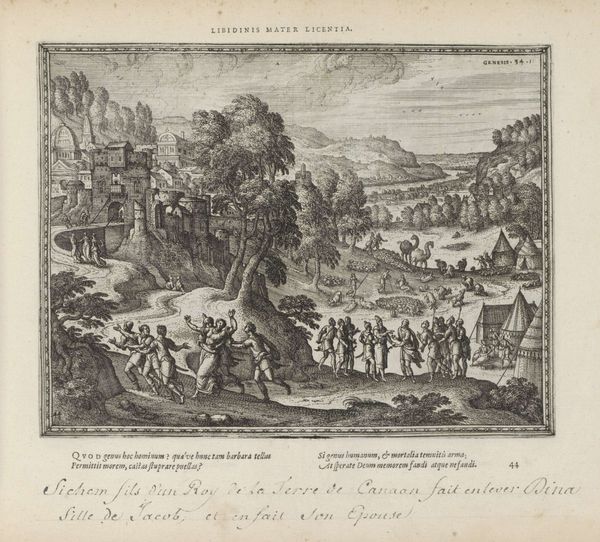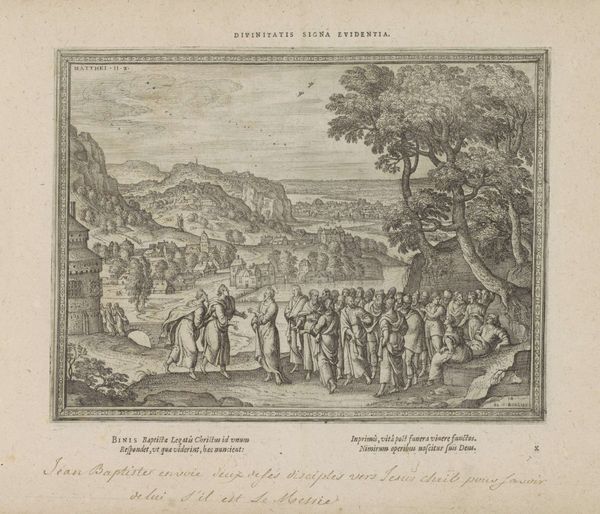
print, engraving
#
narrative-art
#
baroque
# print
#
old engraving style
#
landscape
#
history-painting
#
engraving
Dimensions: height 188 mm, width 243 mm
Copyright: Rijks Museum: Open Domain
Curator: Immediately, the high contrast strikes me—the darkness of the engraving allowing for intensely bright figures to emerge. It feels quite dramatic. Editor: Indeed. We are looking at "Vision of the Seven Candlesticks," an engraving by Pieter van der Borcht the Elder, dating somewhere between 1582 and 1613. It’s currently held at the Rijksmuseum. Curator: Considering the labor involved in such detailed engraving, particularly the density of lines to create shading, the act of creating this piece, making it available, and for whom, must be key to understand it. The materiality itself speaks volumes about production and consumption within its period. Editor: The composition draws the eye centrally to the figure of Saint John, kneeling before what appears to be Christ. The seven candlesticks create a semi-circle, framing them both within the divine vision. Notice the incredible detailing of the landscape receding into the distance, emphasizing spatial depth. Curator: Right, the background illustrates the landscape surrounding the scene, with architecture on a mountainous cliff and bodies of water connecting the characters to their social contexts of maritime economy and governance. The print medium enabled dissemination to a wide audience; a stark contrast with individually-commissioned artworks affordable only by a privileged class. Editor: Observe how the artist uses light and shadow to emphasize the spiritual intensity of the encounter. Saint John is cloaked partially in shadow, whereas Christ emits light, not only emphasizing divinity, but subtly signifying knowledge received and to come. Curator: So it begs the questions, for whom was such accessible knowledge considered important, what classes were considered ideal religious subjects, and what value judgements are built into a process which attempts to democratize religious icons, when production is limited to specialists and skilled labourers? Editor: The symbolic language certainly works to elicit emotional response and encourage interpretation and religious feeling for centuries to come. It's interesting to consider this enduring power. Curator: I see it rather as a dialogue. The symbolic and material converge, enabling a constant renegotiation between faith and social being for all involved. Editor: A fascinating work that rewards sustained visual analysis. Curator: A poignant object, when we consider artistic skill as part of the means for meaning production.
Comments
No comments
Be the first to comment and join the conversation on the ultimate creative platform.
